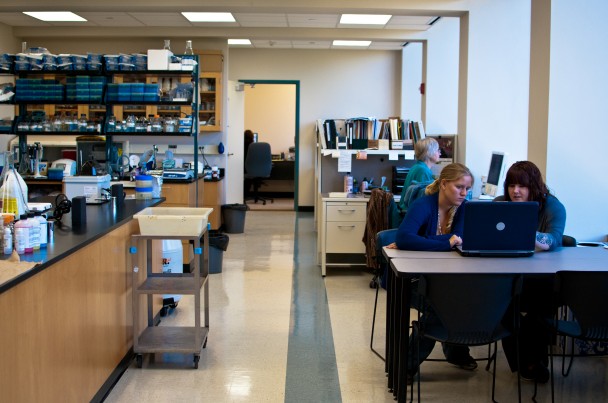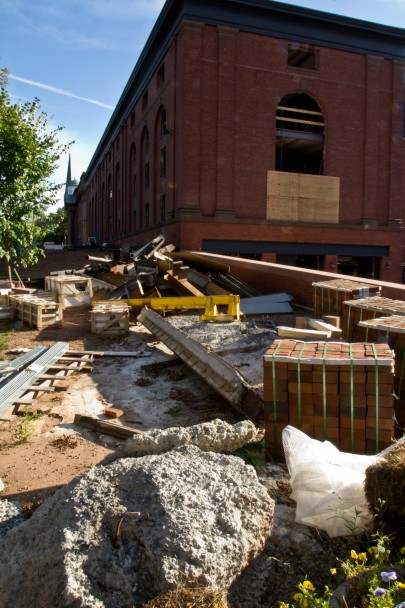
This summer, the University renovated many buildings and facilities around campus while continuing the larger construction project on the squash court building next to the Usdan University Center (Usdan). One large project was the renovation of the science labs in the Hall-Atwater building for the Molecular Biology and Bioinformatics department and the Biology department.
The renovations to the science labs were completed as the second phase of the “Science Masterplan.” The $2.25 million project included 6400 square feet of renovation for teaching, research, shared equipment and research support.
A new research lab was designed for Professor of Molecular Biology and Biochemistry Ishita Mukerji, whose core research is the study of spectra and determining the chemical composition of substances and the physical properties of molecules, ions, and atoms. The University’s first shared research wet lab was built for Professor of Biology Laura Grabel and Assistant Professor of Biology Ruth Johnson. This lab will be used for embryonic stem cell research and transplantation, biochemical and molecular analysis, and dissection.
According to Grabel, the new lab is a more efficient space that allows for better communication between students. She noted that this is the first “open lab” at the University, with a shared common lab space and common equipment in the center.
“There is more desk space for undergraduates, and now they are located right next to the technicians and graduate students they are working with,” she wrote in an e-mail to The Argus. “Also, desks are immediately adjacent to the working space and [there is a] new cell culture room with more space, which makes it easier for students to learn how to culture the cells.”
Other updates to the science labs include a new tissue culture suite, a new microscopy suite for the Biology department, and a new renovated advanced teaching prep lab.
President Michael Roth said that the lab renovations are noticeably visible.
“The photos from the before and after are just really remarkable,” he said. “We’ve been re-doing the labs and adding new equipment in, and it’s gone very well.”
In the spring and summer of 2012, phase three of the project will begin, with plans for another new research lab, a new air handling system and new teaching labs and prep room.
The squash court building construction also made significant strides this summer. The new building will house the Wesleyan Career Center, the College of Letters and the Art History department. According to Construction Services Project Manager Alan Rubacha, the construction is still on schedule for a January 2012 completion.
Roth said he believes the renovated building will be one of the most environmentally sustainable on campus.
“The squash building will be the greenest building on campus when it’s done, and they’re using some of the technology that came in the Allbritton project,” he said. “It should be just a tremendous difference from taking an old building and turning it into a very modern, environmentally sound structure.”
The Public Affairs Center building also underwent construction this summer, with gutter repairs, roofing repairs, a chimney repointing and lead paint removal among some of the major renovations. This project was completed in late August.
Physical Plant also replaced many bathroom facilities throughout dorms and woodframes on campus. Other projects this summer included renovations to the Davison Art Center, the Freeman Athletic Center, and Judd Hall.
According to Associate Director of Construction Services Roseann Sillasen, the amount of construction this summer was unusual.
“There was an increase in the amount of work performed this summer from the prior three summers,” she wrote in an email to The Argus. “This increase was due to the ability to address deferred projects from previous years.”
Typically, a cycle of renovations like the one completed over the summer will last for about ten years according to Sillasen. Construction Services is now already in the planning stages for projects for next summer. Plans for summer 2012 include replacement of the Anderson Track, a fire alarm upgrade for Butterfield C, new insulated glass windows in 200 Church, and roof replacements at the Center for the Arts (CFA) Theater, CFA Design Studio and Judd Hall.



Leave a Reply